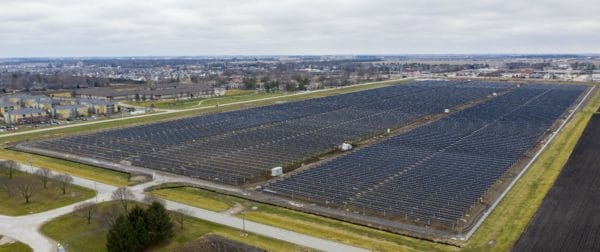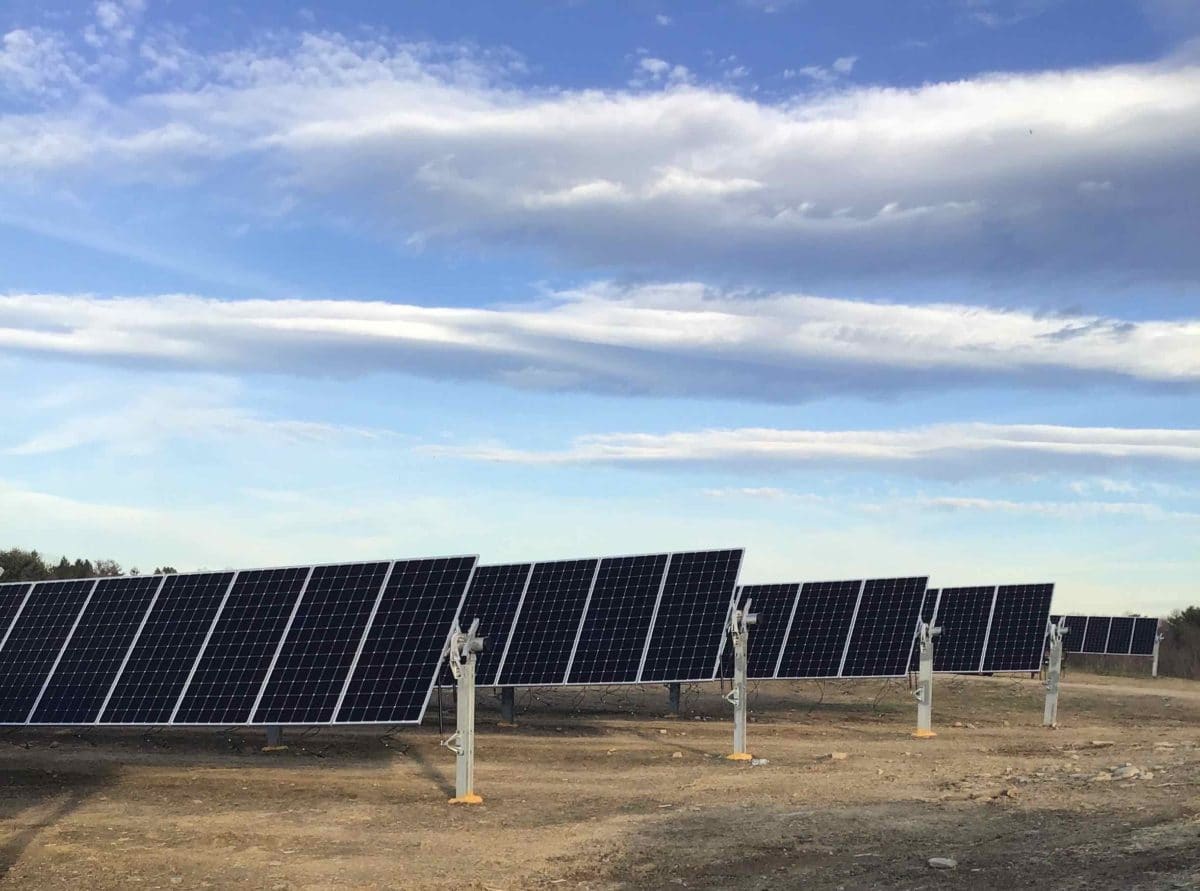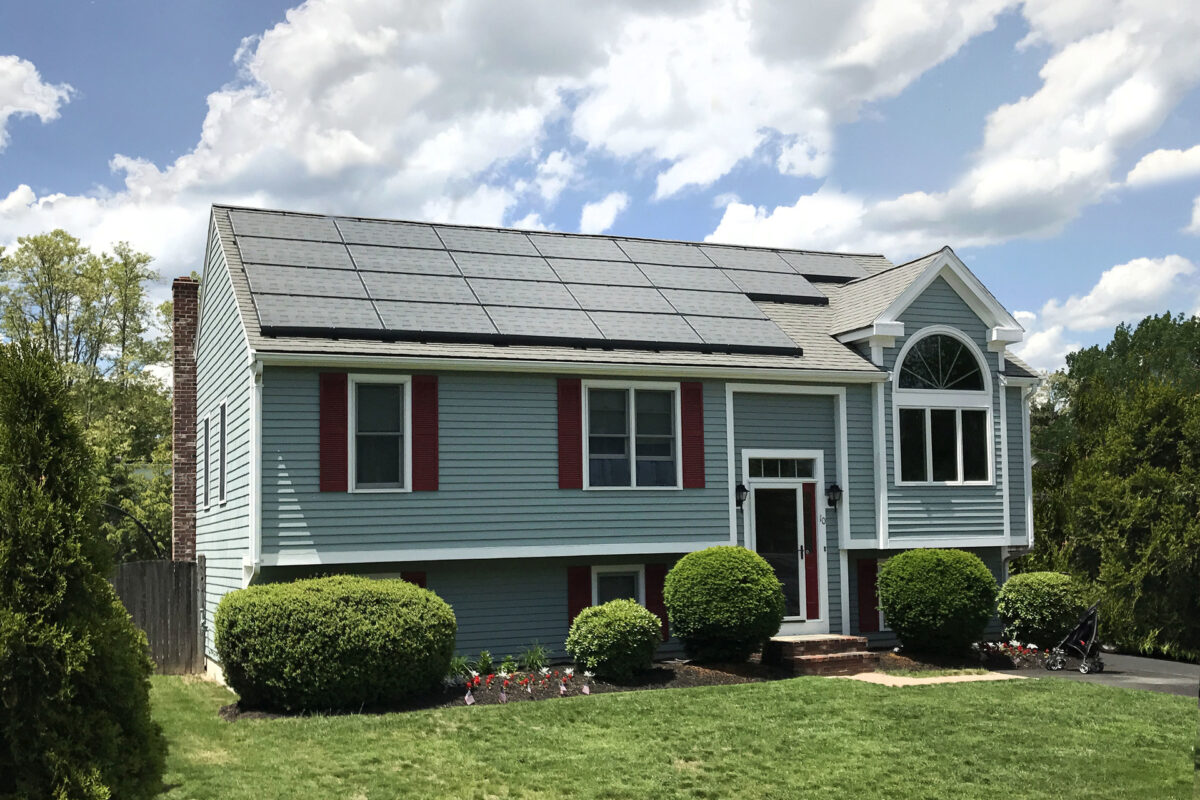The next skinny latte you order at a Starbucks in New York State may come with an extra helping of solar. That’s because the first six of up to 23 community solar projects entered service in the Empire State under a multi-year $97 million tax equity facility with the coffee retailer.
The projects are expected to supply solar energy for local Starbucks stores and up to 24,000 households, small businesses, nonprofits, churches, universities, and stores in multiple locations, including those designated as under-served communities. Program participants will receive a discount to their current electricity rates under the state’s Community Distributed Generation program.
The solar projects are intended to provide more than 119,885 MWh of energy to the coffee retailer. Starbucks provided financing in collaboration with community solar owner Generate and financial services company Churchill Stateside Group. The firm 38 Degrees North worked with Generate on both the projects and the financing.
Starbucks made the investment through a fund established by Churchill Stateside. The retailer will receive renewable energy credits from the projects, which are expected to offset more than 70% of Starbucks electricity use within the state. The total portfolio will include 90 MW of capacity. About 24 MW is now in service.
A growing interconnection queue
Upcoming research from the Energy Department’s Berkeley Lab finds a growing logjam of solar energy projects in transmission interconnection queues managed by regional grid operators. The research found nearly 750 GW of generation and an estimated 200 GW of storage capacity in interconnection queues at the end of 2020.
Solar (462 GW) accounted for a large – and growing – share of generator capacity in the queues. Substantial wind (209 GW) capacity is also in development, 29% of which is for offshore projects (61 GW).
(Read “Interconnection is broken: Radical rethinking is needed to achieve clean energy goals.“)
In total, about 680 GW of zero-carbon capacity was seeking transmission access, as was 74 GW of natural gas capacity. The report said that hybrids now make up a large – and growing – share of proposed projects, particularly in the California Independent System Operator (CAISO) and the non-ISO West. The report said that 159 GW of solar hybrids (primarily solar+battery) and 13 GW of wind hybrids are currently waiting in the queues.
The report compiled and analyzed data from all seven ISOs/RTOs in concert with 35 non-ISO utilities, representing an estimated 85% of all U.S. electricity load. The report included all “active” projects in these generation interconnection queues through the end of 2020, as well as data on “completed” and “withdrawn” projects for five of the ISOs (CAISO, ISO-NE, MISO, NYISO, and PJM).
The repot said that much of this proposed capacity ultimately may not be built. It said that only 24% of the projects seeking connection from 2000 to 2015 have been built. Completion percentages appear to be declining, and are “even lower” for solar and wind than other resources. Additionally, wait times are on the rise. In four ISOs, the typical wait time from connection request to commercial operation grew from around 1.9 years for projects built in 2000-2009 to 3.5 years for those built in 2010-2020.
Falling price quotes for solar
EnergySage released its semi-annual Solar Marketplace Intel Report, which found that solar prices in the second half of 2020 experienced their largest drop since 2017. Quoted solar prices tracked by EnergySage fell by 3.5% between H1 2020 and H2 2020. It said the percent of quotes below $2.50 per watt nearly doubled between the first and second half of the year.
Installers also are quoting the newest equipment, the report said. While two-thirds of quotes included sub-330-watt panels in H2 2019, the same 330 W–and larger–panels accounted for 69% of all quotes in H2 2020.
In addition, LG Energy Solutions overtook Tesla as the most quoted storage brand during the fourth quarter. The report said that nearly 40% of quotes on EnergySage included LG Energy Solutions, making it the most quoted storage brand. Tesla remained the least expensive storage option quoted. Batteries that use lithium iron phosphate (LFP) chemistry were quoted at much higher prices than batteries with nickel manganese cobalt (NMC) chemistry.
Illini solar farm plants some seed
The University of Illinois Urbana-Champaign is putting the final touches on its 12.3 MW Solar Farm 2.0, as planting is underway for the farm’s pollinator habitat. The project is the second solar farm constructed at the U of I and achieves clean energy sustainability goals outlined in the university’s Illinois Climate Action Plan (iCAP) nearly four years ahead of schedule. Clean energy production will now support around 12% of the school’s annual electricity demand.

Image: University of Illinois
Solar Farm 2.0 was developed by national solar energy firm Sol Systems and includes bifacial solar modules, single-axis trackers, and zero-waste construction practices. Sol Systems will manage the asset through the 20-year term of the fixed-price power purchase agreement with the university.
The array was first energized in late January, and has since produced over 4,000 MWh. On May 1, the solar farm provided its largest output of 102 MWh. Along with other solar arrays on campus, the Urbana campus is now generating around 27,000 MWh/year, ranking the university third among U.S. universities in onsite clean power production.
Sol Systems partnered with South Bend, Indiana-based Inovateus Solar, which constructed the solar arrays. Inovateus used reduced-waste construction practices that prevented as much as 45 tons of materials from reaching landfills. Inovateus worked with F&S Waste Management to recycle nearly 94% of the project’s construction packaging, plastics, wood pallets, and other refuse.
This content is protected by copyright and may not be reused. If you want to cooperate with us and would like to reuse some of our content, please contact: editors@pv-magazine.com.









Sounds really good that the pipeline for solar, wind and storage is so large. Interesting on the lower completion percentage. I wonder why that is. Local opposition (which we see more of probably because of astroturfing), it is easier to propose solar projects because they are smaller scale than something like an NG plant, etc? Frankly, I would have guessed the opposite – timelines from proposal to completion of a solar project are shorter so I would think higher percentage would complete. Maybe the developers just move on to another project if there are any roadblocks?
Great news from EnergySage. I had a quote last year from a door knocker company in my area. Over $4/W and they wondered why I wasn’t interested. Not to mention they just handed the project off for someone else to install – no thanks.